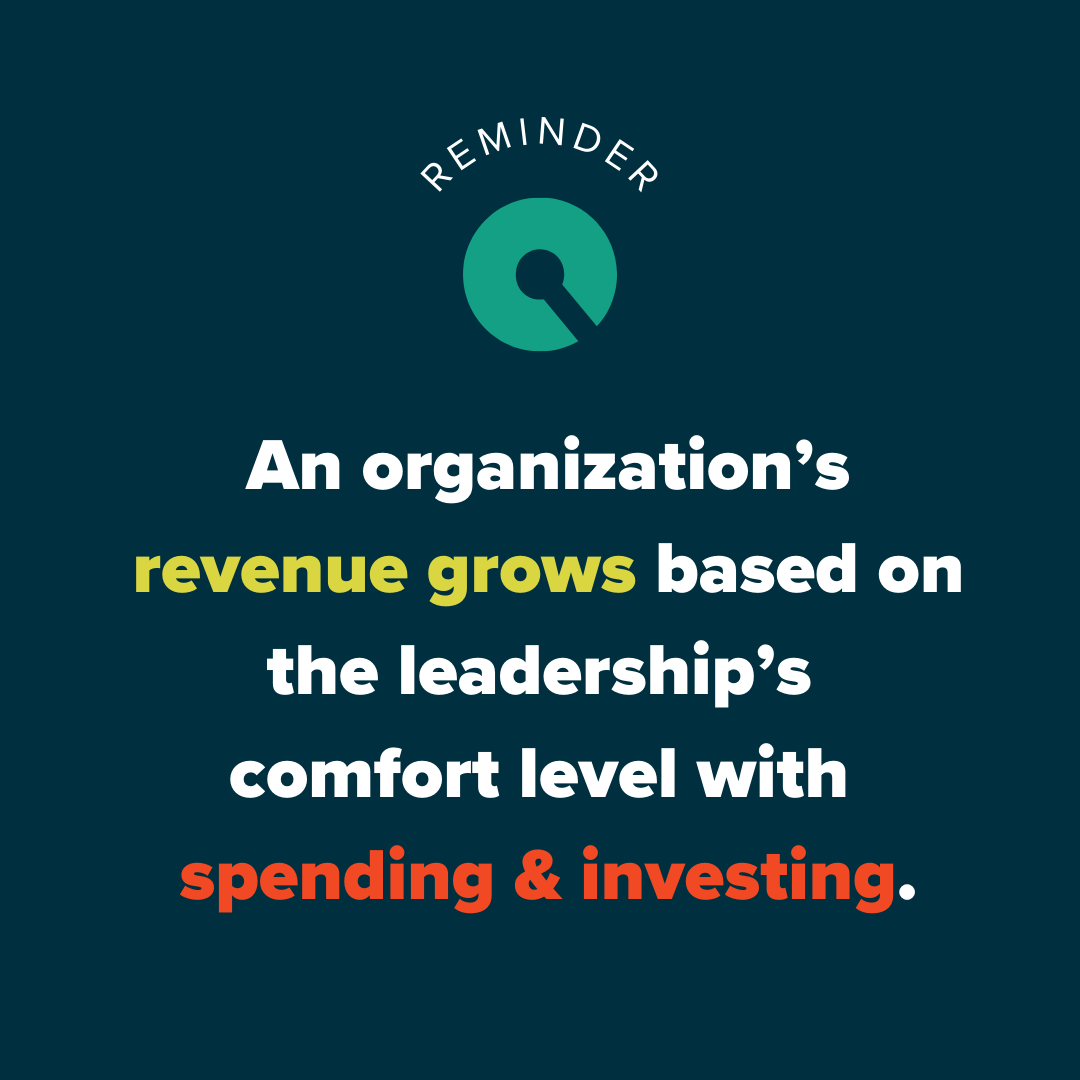A Nonprofit’s Revenue Growth is Based on the Leadership’s Spending and Investing
I’ve gotten really good at knowing my perfect client. In the first call I’m listening for something really specific. . .
Is there a nervous energy around taking risks and spending money to raise more money?
I’ll be hesitant if I hear things like this . . . What if we:
❓Hire a writer to free up our Fundraising Team's time & we don't like them?
❓Hire a Deputy Director to free up our EDs time and they aren't a good fit?
❓Invest in professional development for our staff and then they quit?
❓Invest in that new technology it requires tons of additional training?
I get it. I spend thousands of dollars to run my business also.
But, the LARGEST factor that impacts your organization’s revenue growth? Your constant willingness to to spend and invest in yourself, your staff, and your organization.
Full stop. If I flipped those statements around, here’s the tone I’d love to hear . . .
✨ Let’s invest in an experienced content strategist who knows fundraising too so we can raise more money.
✨ It will be great when the deputy director is hired so our ED has time to build relationships & raise 7-figures more each year.
✨ Let’s be generous with professional development so that my team has the skills to align their hours with dollars and secure larger gifts.
✨ Let’s invest in that new technology and train the staff how to use it so that we can all be more effective when fundraising.
Your organization’s growth has way more to do with your comfort level with spending and investing than any fundraising activity you do.
Revenue problems are fixed with an abundant mindset followed by an honest budget. Then, and only then, can you put together a true financing plan and equipped team to reach your true financial need. And this is what your team needs in place FIRST to set them up to reach their annual goal.
Whenever you’re ready, here are THREE things you can do next:
👣 Follow me on LinkedIn where I share insider info daily — the same lessons I teach my clients about attracting larger gen-ops dollars and diversifying revenue.
🍎 Grab FREE Guides + White Papers — download robust resources you can use to push against the sector’s misconceptions, equip your board, and shift your team into High-ROI fundraising.
📈 Work with me to diversify revenue & secure the gen-ops gifts you need to grow. If you’re a business-minded nonprofit CEO with big growth plans but need to make charitable revenue from investment-level donors a bigger part of your budget, you can apply to work with me here.


